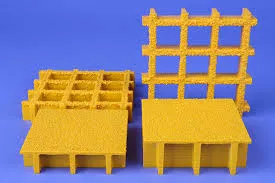loading...
- No. 9, Xingyuan South Street, Dongwaihuan Road, Zaoqiang County, Hengshui, Hebei, China
- admin@zjcomposites.com
- +86 15097380338
- Welcome to visit our website!
Durable and Stylish Solutions for FRP Handrails in Modern Construction
The Advantages of FRP Handrails A Comprehensive Guide
In modern construction and design, the choice of materials can greatly impact safety, aesthetics, and maintenance. One innovative solution gaining popularity is Fiber Reinforced Polymer (FRP) handrails. This article delves into the characteristics, advantages, and applications of FRP handrails, highlighting their significance in various environments.
Understanding FRP
FRP stands for Fiber Reinforced Polymer, a composite material that combines a polymer matrix with high-strength fibers. The fibers, often made of glass, carbon, or aramid, provide exceptional strength and durability, while the polymer matrix adds flexibility and resistance to environmental factors. This combination results in a lightweight yet robust material that excels in many applications, from industrial settings to architectural features.
Key Advantages of FRP Handrails
1. Durability and Longevity One of the primary benefits of FRP handrails is their durability. Unlike traditional materials such as wood or metal, FRP is resistant to corrosion, rust, and rot. This makes FRP handrails an ideal choice for outdoor applications or areas prone to moisture. The lifespan of FRP is significantly longer than that of conventional materials, reducing the need for frequent replacements and maintenance.
2. Lightweight and Easy to Install FRP handrails are lightweight compared to metal or concrete alternatives, which simplifies the installation process. This characteristic not only reduces labor costs but also allows for easier handling during transport and assembly. The ease of installation makes FRP an attractive option for both construction workers and DIY enthusiasts.
3. Low Maintenance Requirements The non-porous surface of FRP handrails means they do not require regular painting or sealing, unlike wood, which must be treated to prevent decay. Cleaning is straightforward—typically requiring only soap and water. This low maintenance requirement appeals to property owners and managers looking to reduce upkeep costs.
4. Aesthetic Flexibility FRP handrails come in various colors and finishes, allowing designers to create visually appealing structures that complement their surroundings. The material can be molded into various shapes and designs, providing incredible versatility in architectural applications. Whether for residential, commercial, or industrial settings, FRP handrails can enhance the overall aesthetic without compromising safety.
frp handrails

5. Safety Features Safety is a primary concern in any environment where handrails are used. FRP handrails can be designed to provide a secure grip and can meet stringent building codes and safety standards. Additionally, the material is non-conductive, making it a safer choice in environments where electrical hazards may be present.
6. Environmental Resistance FRP exhibits excellent resistance to harsh chemicals, UV rays, and extreme temperatures, making it suitable for a wide range of environments, from chemical plants to beachfront properties. This resilience ensures that the handrails maintain their integrity and appearance over time, regardless of exposure to challenging conditions.
Applications of FRP Handrails
The versatility of FRP handrails allows them to be employed in various settings, including
- Industrial Facilities Their resistance to chemicals and corrosion makes FRP handrails ideal for factories, refineries, and wastewater treatment plants. - Commercial Buildings Restaurants, shopping malls, and office complexes benefit from the aesthetic appeal and durability of FRP.
- Public Spaces Parks, bridges, and recreational areas utilize FRP handrails for safety without sacrificing design.
- Residential Areas Homeowners seeking durable and low-maintenance options for decks and stairways increasingly choose FRP handrails.
Conclusion
In conclusion, FRP handrails represent a significant advancement in safety, durability, and design in the construction industry. Their unique combination of lightweight composition, low-maintenance needs, aesthetic versatility, and resilience to environmental factors make them an ideal choice for various applications. As architects and builders continue to seek innovative materials to enhance safety and design, FRP handrails will likely play an increasingly prominent role in modern construction. Adopting FRP handrails is not just an investment in durability; it’s a commitment to safety, efficiency, and effective design that meets today’s construction challenges.
-
GRP Structures: The Future of Lightweight, High-Performance EngineeringNewsJun.20,2025
-
FRP Water Tank: High-Performance Storage for Corrosive and Clean Water SystemsNewsJun.20,2025
-
FRP Square Tube: The New Industry Standard for Chemical and Structural ApplicationsNewsJun.20,2025
-
FRP Pultruded Profiles: The Ultimate Choice for Lightweight Structural StrengthNewsJun.20,2025
-
FRP Handrails: The Safer, Smarter, and Stronger Choice for Modern InfrastructureNewsJun.20,2025
-
FRP Grating: The Smart Solution for Durable, Lightweight Industrial FlooringNewsJun.20,2025
-
Why Choose a Galvanized Water Tank for Your Storage NeedsNewsMay.21,2025
